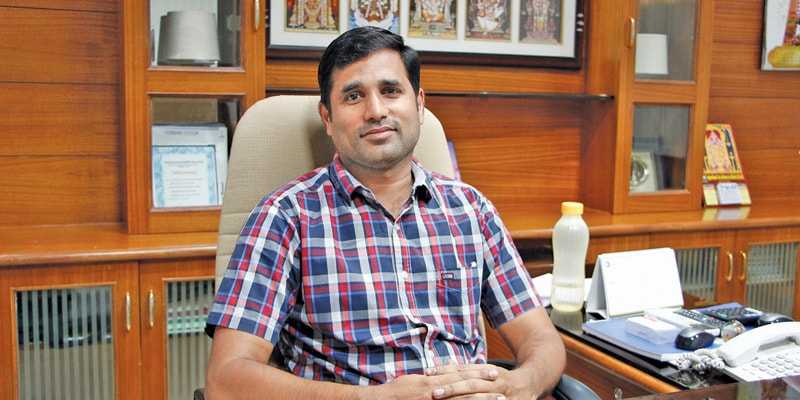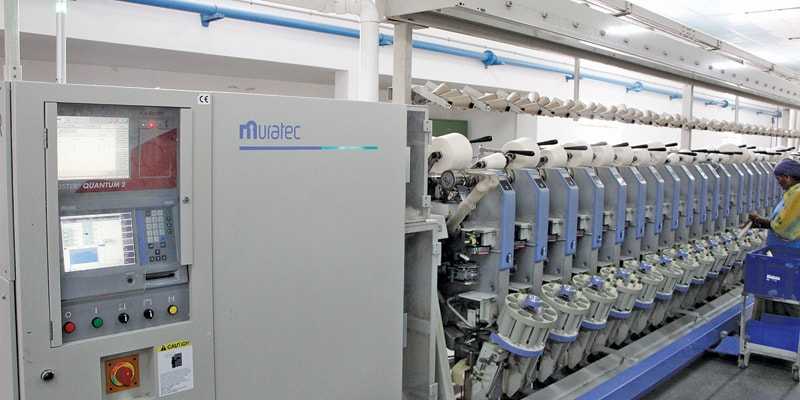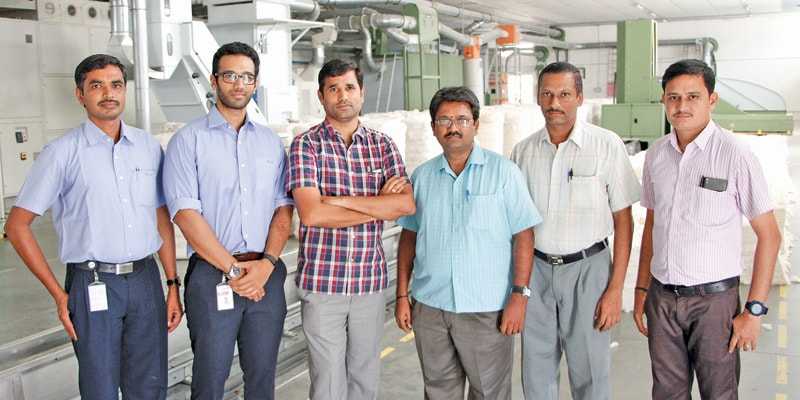
Interestingly, the Indian textile industry is undergoing various innovations in terms of cost-efficiency and also energy-saving, and one such company focusing on identifying energy saving options along with partners is Anangoor Textile Mills. The company with the technical support of Elgi Equipments, Coimbatore has invested in systems to save on steam as a source of energy and has been propagating the same to the numerous members of ITF (Indian Texpreneurs Federation) as well. Speaking exclusively to Apparel Online , KR Senthil, Director, Anangoor Textile Mills talks about this initiative, the need that led to such an innovation, and why it is imperative for the industry to look at energy-saving options.
In order to identify the problem whether it’s man-made or machine-made, the company has been working with Elgi Equipments to cover each department in order to rectify the challenges that arise due to air leakage. Elgi on their part have been taking notes regarding the daily consumption of steam by the company’s machines so that they can understand the difference in leakage and accordingly help the company in making decisions of the appropriate technologies/solutions available. “In every department, we have taken into account what is the consumption of air by the machines and the production process, so that it is easy to draw out the difference in leakage. There’s a lot of saving that has occurred due to this.
Due to this, the company’s savings quantum is leaping at an average of 15-20 per cent. The company which is into manufacturing of yarn was facing such a problem mostly in its spinning mills rather than the knitting business which is just 5 per cent compared to spinning.

Currently, the company’s production capacity is 12.5 tonnes per day of cotton; and though heavily investing in a lot of latest machinery still the challenge of air leakage persists. With a mix of latest technology machines and compressors, the company had also dealt with challenges of lack of understanding and maintenance that led to huge issue of leakage. “The lack of maintenance accounts for 50 per cent of the problems but there is the problem with pipeline as well. Earlier we had a 3 inch pipeline and now we have a 2.5 inch, so the output is different. It was only when we approached the Elgi people that we even understood and could identify the problems, and correct the same,” claims Senthil. Through a one year project, Elgi had several meetings with various departments of the company and within a year they completed 95 per cent of the air auditing of the company. “They gave us a detailed report regarding which department had power shortage, air shortage, etc. The solutions are a mix of high-end technology, mechanical support and simple common sense; also it’s a 50:50 ratio of changing the systems and adding new equipment,” adds Senthil. Every year the company plans to change its inputs as spinning system is poor therefore there is a need for investment every time, which is one of the major priorities for the company.

Continuously, the company felt the need for energy saving due to its machineries running 24×7, 365 days a year. A constant working relationship with Elgi Equipments has enabled Anangoor to achieve 90 per cent implementation of suggestions by Elgi. Apart from this the company has also put trainings in place to help their technicians to implement it better through close coordination with Elgi. “They have visited us many times and in many of their visits we conducted meetings between their technician and ours. During the first meeting there was 3 days’ training. Once that was done, we conducted meetings on weekly and monthly basis to ensure that whatever Elgi has suggested is being done properly. So the 90 per cent implementation today has been spanned out throughout – first 15 days 10 per cent, second meeting 20 per cent, and likewise in 15 meetings together within 2 months, we could achieve 90 per cent,” asserts Senthil.
Now the company is running one compressor, which is a major energy-saver and is propagating the same to ITF members also. “We have shared the suggestions that Elgi gave us to ITF team and they are following it. In ITF we are more than 400 members and we work closely on a lot of initiatives. In our monthly meetings we discuss options such as air auditing, LED, etc. Currently we have a tie up with Phillips and we are using LED lights for spinning,” informs Senthil. This inflow of information between the various members of ITF happens through WhatsApp, which has become a great tool of communication between each member.
The 15-year old company is open to sharing of information with other likewise stakeholders, which is contrary to how the Indian textile industry functioned earlier. “There are a lot of young entrepreneurs which are coming up and they are focusing on setting and developing their business. We are also focusing on developing our business. So to understand and correct our mistakes we need to work collectively and share things and suggestions,” adds Senthil. This resonates completely with the motive of ITF, whose members believe in sharing information and knowledge.
This has further been enhanced through the Government’s support, which is now open to listening and discussing concerns of the industry. “We have a proper agenda and discuss our concerns regarding our industry with the concerned officials; we also share our agendas every one or two months with the ministry. And it is important to give such inputs so that the Government understands our concerns,” states Senthil. With a production capacity of 21,600 spindles, the company is happy with the open dialogue with the Government and the changing business environment in the country.
Progressively innovating not just for sustainable options the company is also trying to move from fibre to fashion in terms of its product offering both to the export and domestic market. With a balanced 50:50 ratio of basics and innovative products, the company is going forward looking at more innovative product categories and exploring new and different types of markets apart from Vietnam and Bangladesh.

Post a Comment